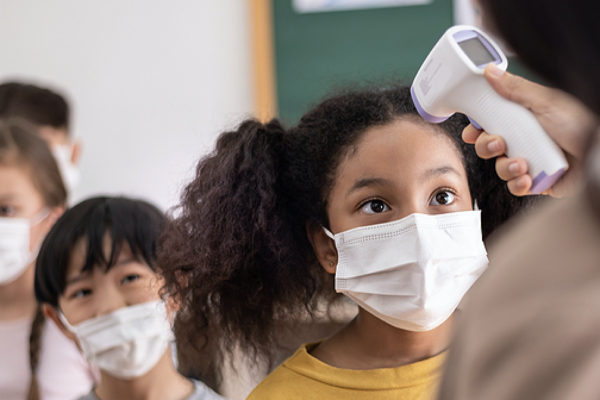As many school districts begin to transition from remote instruction to some form of in-person learning, education leaders are facing three pivotal questions that will have an outsized impact on student experiences, educator effectiveness and overall equity during the transition.
First, should schools move to fully in-person schooling or to a hybrid model?
Many district leaders view hybrid models, which allow some students to attend school in person at least some of the time, as a step toward full in-person instruction. But remote, hybrid and in-person models do not exist on a neat continuum. Rather, they involve a range of decisions, distinguished by how many students attend school in-person and how much time these students spend in the school building.
Hybrid models present significant logistical challenges.
Some districts have decided all students attend in person on some days. Others are bringing certain students in every day and keeping others in remote mode. New York City, Indianapolis and Denver are starting in-person instruction with just students in the early elementary grades. Other districts prioritize students in transition years, such as kindergarten, and the start of middle and high school. And some focus on students with disabilities or limited English language skills, two groups who particularly benefit from face time with teachers.
Policymakers also need to consider schools’ ability to implement hybrid or in-person models during the pandemic. Do schools have the classroom capacity to provide sufficient distance among students and teachers? If demand for seats exceeds supply, districts have no choice but to adopt a hybrid model.
[Read More: Moving to the Next Phase of School Reopening]
Moving to full in-person instruction for high-priority students and others who want it is easier with smaller class sizes, a lower proportion of students opting for in-person instruction, and larger classrooms.
If a district chooses to pursue a hybrid model, there’s the question of how to deliver in-person and remote instruction simultaneously.
The simplest approach would be for both in-person and remote students to remain in their existing class assignments: one teacher provides simultaneous instruction to students in the school building and those logging in from home. But working in both modes at the same time is challenging for teachers and can make it difficult for students to stay engaged on their remote days.
One way to sidestep the problem is to create split schedules, in which students participate in different activities on in-person and remote days. Seminars, labs, collaborative work and introduction of complex concepts take place in-person, with skills practice, knowledge-building, teacher office hours and self-driven learning happening remotely. Ideally, remote days include some time with the teacher to maintain student engagement and learning.
Another approach is to bring some students—in early grades, transition years or high-need groups—into school full time, while other students remain fully remote.
[Read More: Roadmap to Reopening: State Guidance to Schools on Masks and More]
Schools can also place remote students with remote teachers and in-person students with in-person teachers to simplify instruction. While some students and teachers may have to switch teachers and create new relationships if schools reopen mid-year, these new class assignments could be sustained if schools have to return to full remote learning. This shift is less challenging if educators are already team-teaching.
If districts choose to teach in-person and remote classes simultaneously, and if staffing levels permit, schools could double the staff in the classroom. As the teacher provides instruction to students at school, a reassigned art, music, or physical education teacher, aide or other staff member can help remote learners stay engaged. That may require borrowing teachers from other grades or subjects so that every classroom has a teacher.
Finally, some teachers may be unable to work in school buildings due to health, family or other factors. How should schools handle this?
One strategy is to assign remote teachers to a classroom composed entirely of students working remotely. There will be students who choose to stay home or who have health conditions making school risky. So it makes sense to pair remote teachers with those students.
Another option would be to assign remote teachers to support hybrid students on their remote days. This increases the amount of educator-led time for hybrid students on their days out of school; but remote learning time may require larger group sizes.
If space permits, the school could reassign students from the remote teachers’ classroom to those teaching in person. That has some drawbacks: requiring new student-teacher relationships and possibly leading to the remote teacher working with fewer students than each in-person colleague.
A final option would be to have a teacher’s aide, a literacy specialist or instructional coach in the classroom while the remote teacher leads the classroom from a screen at the front of the room, to give students addition, in-person support.
As these options demonstrate, schools where teachers work in teams and where roles can be defined flexibly open up more possibilities. Leaders should use all available flexibility and creativity in assigning educator roles. If they lack sufficient flexibility, it may be time to revisit or renegotiate policies that get in the way.
[Read More: Key Decisions for More Effective Distance Learning]

